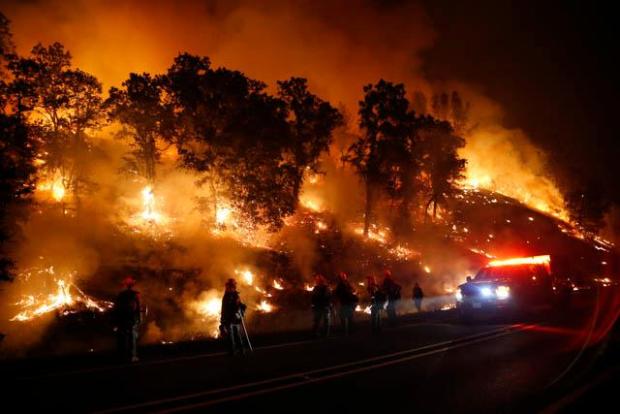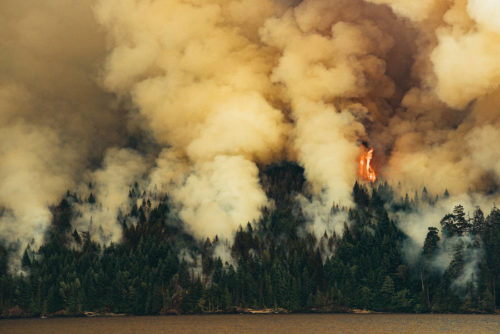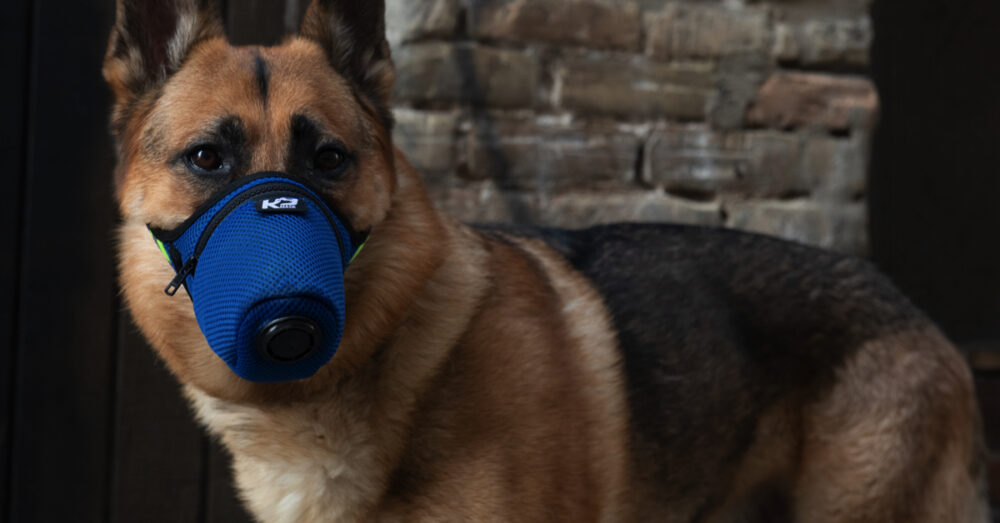
11 Dec When Dogs Inhale Wildfire Smoke: Signs and Solutions
If you live in Southern California, or ever turn on or read the news anywhere else in the country, you are probably familiar with the wildfires that are raging right now in Los Angeles County. You might even be familiar with the fact that even if these fires don’t burn you or your home, your health can still be at risk due to the massive amounts of smoke in the air.
Did you know that smoke inhalation as a result of wildfires can be a health risk for pets as well? The two most common health concerns in pets linked to plumes of smoke billowing into the air they breathe are ocular inflammation and respiratory inflammation.
Signs of ocular inflammation, or inflammation of the eye:
-Squinting (bletharospasm)
-Red coloring to the white of the eye (scleritis)
-A clear, white, brown, green or possibly bloody discharge coming from the eye (ocular discharge)
-Inflammation of the clear mucous membrane the covers the white of the eye and lines the inside of the eyelids (conjunctivitis).
-Scratching or pawing at the eyes and rubbing the face on carpet or furniture (puritis).
 Signs of respiratory inflammation, or inflammation of the nasal passages, the nasopharynx, the larynx, the trachea, lower airway passages and/or the lungs:
Signs of respiratory inflammation, or inflammation of the nasal passages, the nasopharynx, the larynx, the trachea, lower airway passages and/or the lungs:
-Greater effort to breathe
-Increased respiratory rate
-Abnormal extension of the neck to straighten trachea in order to let air more easily reach the lungs (orthopena)
-Sneezing
-Wheezing
-Nasal discharge
-Coughing
Smoke inhalation can also cause:
-Disorientation/confusion
-Syncope (fainting)
-Coma
-Sleepiness
-Seizures
These physiological responses are mostly attributed to three factors:
-Not enough oxygen reaching the brain
-Chemical asphyxiants in the air including hydrogen cyanide, aldehydes, hydrochloric acid, and acrolean.
-Extremely small, eye and lung-irritating debris in the smoke
How to Protect Your Pet From Poor Air Quality:
If you are experiencing stinging or burning in your eyes or throat, or notice the heavy smoke smell in the air produced by wildfires, your dog is experiencing symptoms as well. Pay attention to your local AQI (Air Quality Index). Keep your dog inside as much as possible. Try exercising your active dog on a treadmill instead of walking him around outside. In the house, keep your windows closed and use your air conditioning instead.
You may spend your days at work outside the area effected by the fires, but if your home is in those areas, your dog is spending all day there, and is exposed to much more smoke. Consider a doggy daycare out of the area, taking him to work with you (if you can) or having a friend or family member watch him until the fires settle down. If your neighborhood is in any danger whatsoever of being the subject of a necessary evacuation, do not leave your dog at home during the day. Take him with you when you leave the house or arrange for other care. Once roads are closed due to a fire, the likelihood that firefighters will let you cross their lines to go get your dog are slim to none.




Sorry, the comment form is closed at this time.